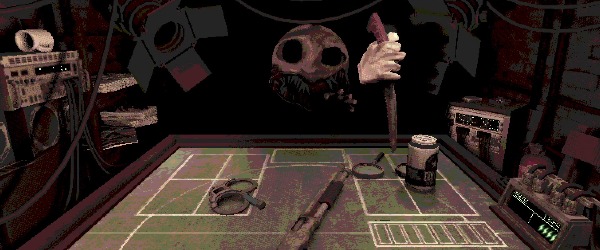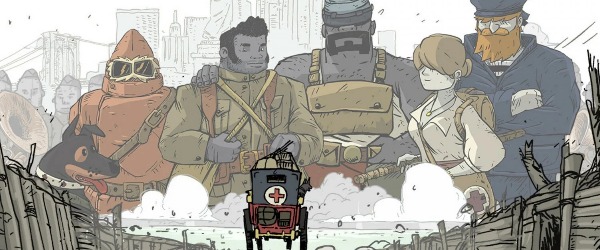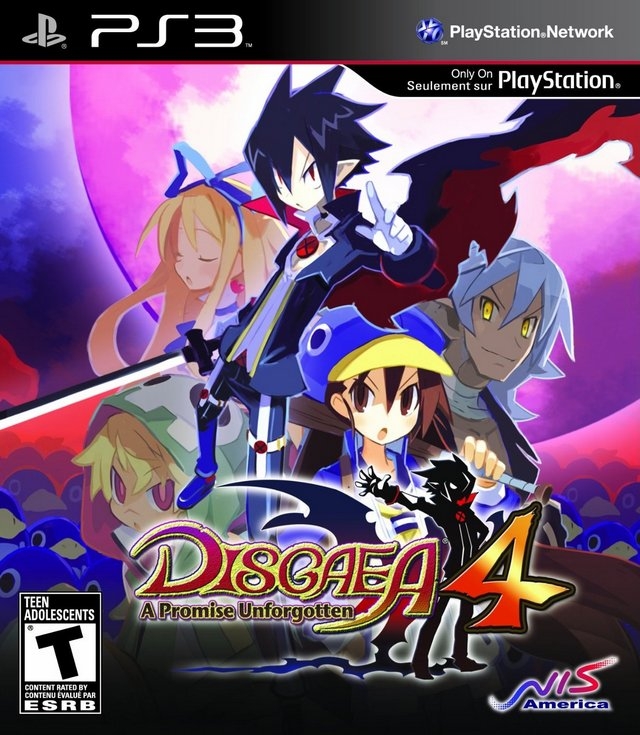
Disgaea 4: A Promise Unforgotten - Review
by Karl Koebke , posted on 22 September 2011 / 9,075 Views
It’s going to be a weird couple of months for console JRPG fans. Where usually I only have one game every 2-3 months to look forward to, I now have so many to play that I couldn’t fit them all in my schedule even if I wanted to. Atelier Totori, Xenoblade Chronicles, Disgaea 4, Rune Factory: Tides of Destiny, White Knight Chronicles 2, and Dark Souls, all in the space of about a month and a half. One could argue about which of these games actually fit their personal JRPG credentials, but it’s hard to argue that this isn’t a packed schedule of gaming goodness. So does Disgaea 4 have what it takes to stand out in this weirdly crowded line-up?
Another Disgaea brings another Netherworld. This particular Netherworld was ruled by a fierce vampire tyrant known as Valvatorez, but he has since come on harsh times. It’s common knowledge that vampires get their powers from drinking human blood (and sparkle in the sunlight if my buddy Craig is to be believed), but Valvatorez refuses to drink any human blood because of a promise he made to a human 400 years ago. His powers have waned and he has fallen to the lowly class of Prinny instructor, much to the annoyance of his loyal servant Fenrich. Valvatorez was perfectly content with this state of affairs, but after learning that the Prinnies have become overpopulated because of the gross incompetence of the corrupternment (Demon speak for government) he decides that he could run things better himself. Thus begins Valvatorez’s rise to the top of the polls.
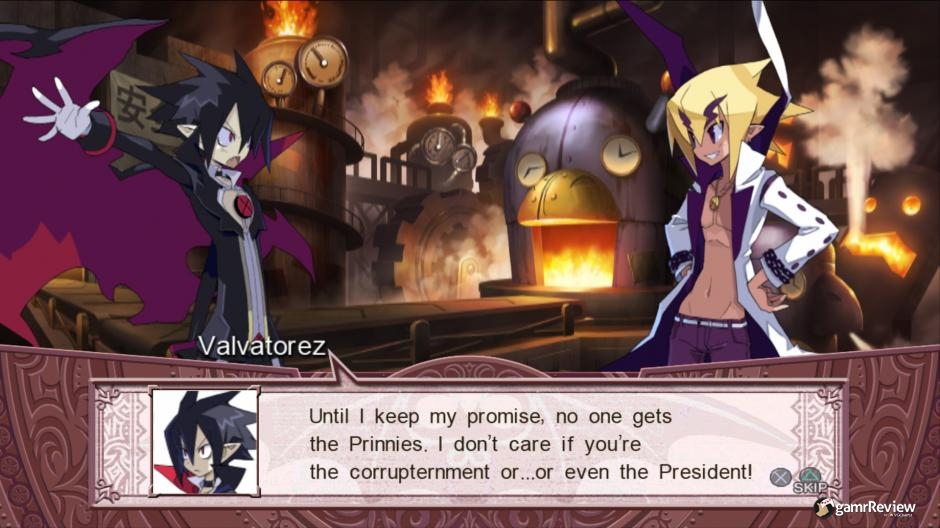
Disgaea 4 continues the tradition of ridiculous humor that is the hallmark of the series. Don’t expect meaningful life lessons or tear wrenching deaths in this game. Sure, people die, but it’s all in good fun. I laughed quite a few times throughout. For example, Valvatorez has replaced his thirst for human blood with a love of sardines, you meet a clearly dead middle school student who just refuses to believe she’s a prinny, and you beat the “final boss” within the first third of the game. My only caution to those thinking of jumping in is that a good amount of the humor is based on a general understanding of - or interest in - Japanese culture. So if you aren’t at least a little bit interested in that kind of thing you probably won’t get it when they call Fenrich a Tsundere or the latest skill you unlock ends in the “Pythagoras Switch” song. Disgaea 4 is still funny regardless and most of the humor will be obvious to anyone, but you will miss out on a fair chunk of it.
While the story talks a lot about elections and the political process of the Netherworld, it turns out that this all translates into the usual “go somewhere and kill everyone you see” grid-based gameplay that we all know and love. It’s a relatively simple turn-based affair as far as actual battle mechanics go (get the “Heart Cannon” as soon as you can and love it like a family member). There are skills to learn that use MP as well as team attacks you can do and combo counters to increase damage, but what really makes each map unique is the effect of geoblocks and geopanels, as well as the ability of characters to lift and throw objects, allies, and adversaries. Often, when you go into a new map, you’ll see patterns of colored grids with differing effects. These range from increasing attack power to leveling up any enemy that ends their turn there, or even destroying units that stand on them.
Veterans will know that these panels can be exploited and the effects changed by destroying or adding geoblocks to different colors of geopanels. Throw an “Invincibility” block on any red space and now you have a safe bastion to position your characters on. Most maps use these in one way or another and it really helps to keep things from being a simple matter of walking up to the nearest enemy and using your most damaging skill. This means that the difficulty in most maps doesn’t directly come from the enemies you face but the layout of the map itself, which I really appreciate. Something I noticed about Disgaea 4 is that there were quite a number of maps that used geopanels with “no entry” effects to corral you one way or another and make fights that would have been relatively simple much more challenging. The only issue with this set up is that replaying battles doesn’t really get you the same rush you got from trying to figure it out the first time around, but that’s true of most Strategy RPGs.
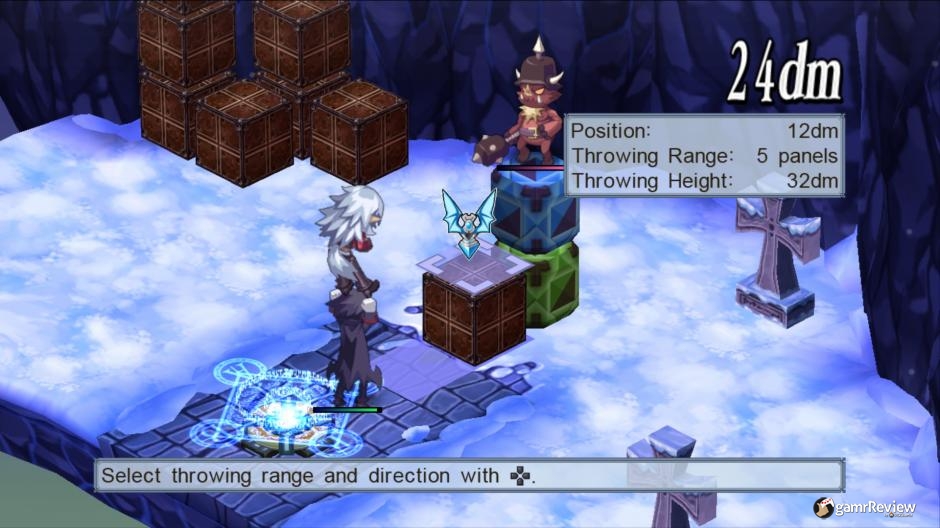
The other notable thing about the Disgaea series is that it can be quite a grind, with characters returning to level one when you reincarnate them to a better class, and you have to try to manage 20 or 30 characters when only 10 can be out at any given time, and only those that score the finishing blow on an enemy get experience and mana which you can buy skills with. Luckily the grinding is mostly optional. I only felt like one battle required me to grind in order to stand a chance, and that was near the end, so it was understandable. You don’t have to reincarnate your characters if you don’t want to and having a few units sit on the proverbial sidelines will never be punished (there are no “oh hey you have to use this person for this battle” scenarios, thank god). Also, Disgaea does grinding better than any other game, giving you options to make it more varied and speed it up.
Randomly generated maps can be found in item worlds (you literally jump into an item to make it stronger), which gives you an option other than just grinding one map over and over. Also, when you aren’t in a story mission, enemies can be thrown onto each other to combine their levels. If you weaken two level 30 monsters down to near death and toss them together you can create an almost-dead level 60 monster which gives significantly more experience. It’s a great way to quickly level up your newly reincarnated characters.
But this is all old hat for anyone that has played a Disgaea game before, so what’s the new stuff? Well the Magichange ability from the third game, which allows monsters to be morphed into weapons during a battle, plays a more prominent role. There are no longer any special requirements, so any monster can be Magichanged to equip any of your humanoid units. Your own monsters can now be combined to make giant variants and those can then be Magichanged to make giant weapons, but this probably won’t come into play until you beat the main storyline. I noticed that maps often focused things around the base square this time around, which was great because it meant I could really make use of having more than 10 plausible units by switching out injured characters for the benched ones. The classroom from Disgaea 3 has been replaced with a Cam-pain HQ (apparently demons love puns) which has a greater focus on where you position your units on the grid. There’s also a greater focus on defense than previous titles. Defending units can actually switch out and take damage for adjacent units with the right abilities from the Cam-pain HQ, which is a really nice way to be able to protect your weak casters who always died within a few turns in the first three games (at least for me; I’m sure that means I suck).
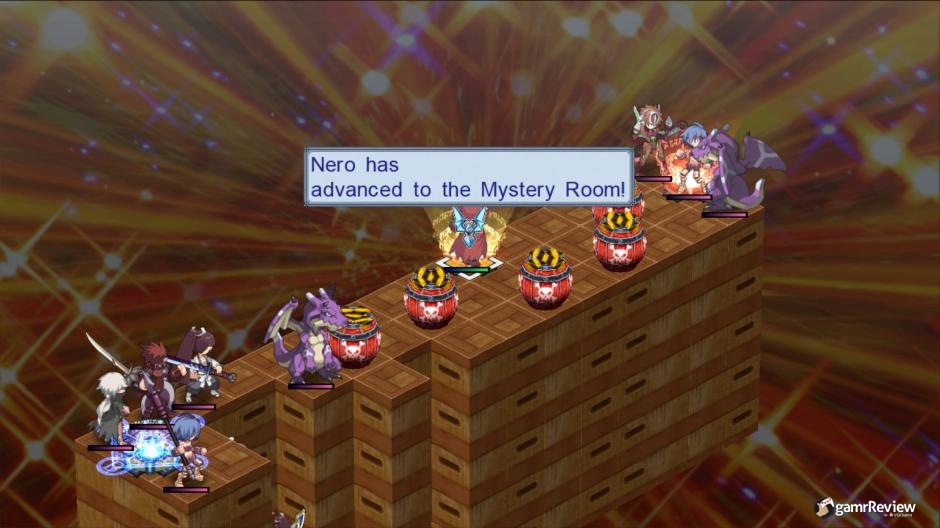
Some big new additions to the series are online capabilities, as well as a more fun and eventful item world. Don’t go thinking that online means that you’ll be playing directly against other players though. Think of it more like having a number of ways to make user generated content and indirectly interact. Senate voting is back again and so are special senators that can make a huge difference in the vote. Since you’re running for President you have to have a cabinet and one of these is a Foreign Minister who will actually go out into other players’ senates and use a special action before voting him/herself. You can choose what action they take, such as knocking out several nearby senators or charming them to vote the same way as your Foreign Minister. It’s an interesting change to the norm and it was fun to read about the votes my foreign minister had cast in other players’ worlds, but I wish the game would record the action so I could see it for myself. This complaint also extends to the pirate crew you make.
Pirates have been a part of the Item World in Disgaea for a long time but they’ve always been the purview of the truly hardcore, rarely affecting the average player. This has been changed and not only do pirates appear more often, but reverse pirating is much more accessible. You can even make your own pirate crew and upload it to randomly appear in someone else’s game and help or hinder hapless people on PSN as they try to traverse the item world. You set the ship parts and position the crew with basic instructions upon their arrival, like “charge”, “ranged attack” or “defend the ship”. Again, I really enjoyed reading about how my pirates went in and ruined someone’s day (I’m evil like that) but there was no way for me to see the actual fighting. Luckily there are Pirate Duels which pit pirate crews against each other. You can’t directly control your units but they will follow the basic AI instructions you give them and you can watch it all go down. It’s a fun little distraction whenever you get bored of the regular battle system.
There are other online systems like map creation and the ability to call upon a computer controlled version of other players’ defense ministers. These mostly just add variety but I can understand why NIS thought that a more direct competitive online system couldn’t work for Disgaea, since characters can one-shot each other pretty easily at later levels. It would always just be a matter of who got the first hit in.
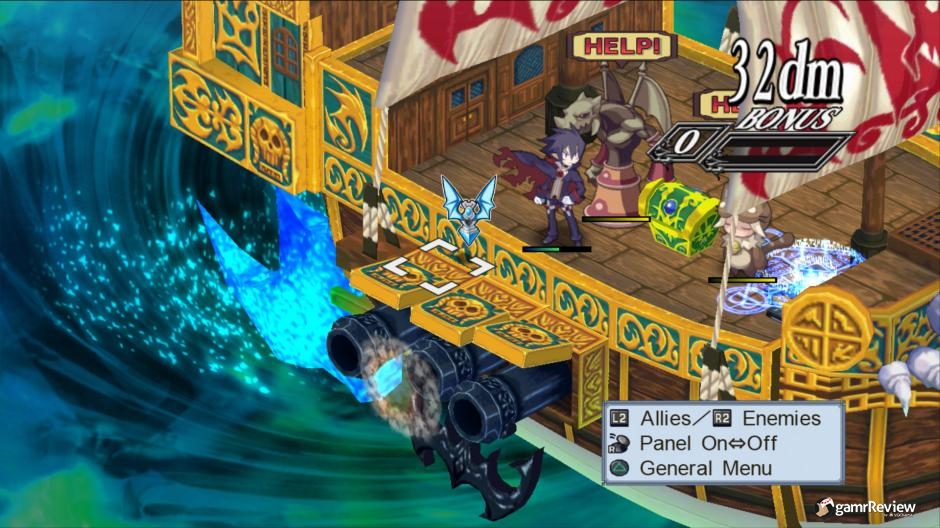
One thing that hadn’t been updated since the series' inception was the graphics, but thankfully that’s all changed with Disgaea 4. The sprites have all gotten a huge upgrade, to the point that I learned that the skull units are all wearing tiny glasses and thieves have cat eyes. You can still see the rough edges to the characters when skills bring the sprites right up to your face, but overall it’s a fantastic new look for the series. Unfortunately the environments you battle in have remained largely the same and they look somewhat cheap and underdeveloped compared to the units walking around on them.
When it comes to sound design Disgaea is where NIS and NISA pull out all the stops and this remains true for Disgaea 4. I really enjoyed all of the voice acting. Perhaps it’s easier to get a good performance out of people when the script is more comical than dramatic, but it’s still quite impressive. There was no single song that stuck with me as much as the opener to Disgaea 3, but that isn’t to say it was disappointing and the soundtrack is still one of the highlights of the series.
I beat the main story to Disgaea 4 in about 40 hours, but the sheer amount of units I still had to play with between monster and humanoid classes, the online options, and continuing story means that Disgaea keeps its crown of best value for the genre. They cram so much stuff onto the disc that it’s kind of understandable that it's not a technical masterpiece graphically. The idea that I “beat” the game with 150 as my highest character level and you can get all the way up to level 9999 is just mind boggling.
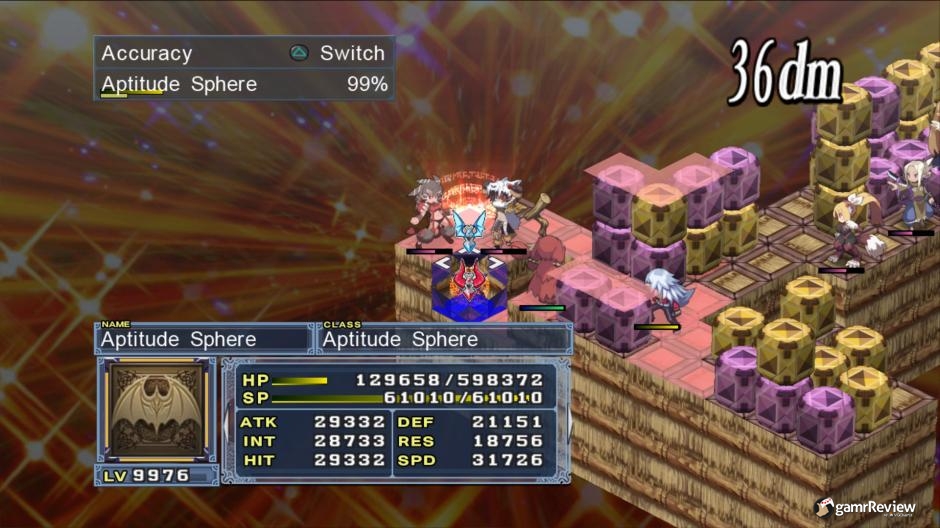
Hopefully the new look and accessibility of this latest Disgaea brings some more fans to the series. Unique gameplay that turns each battle into a puzzle, some truly uproarious humor, and more value than any other game I can think of make this a game fans of the genre should not miss. Perhaps next time NIS can work on the game’s environments to bring them up to caliber with the characters and work on the new online functions, but even if they don’t I’ll still await the next game with baited breath.
VGChartz Verdict
8.7
Great








